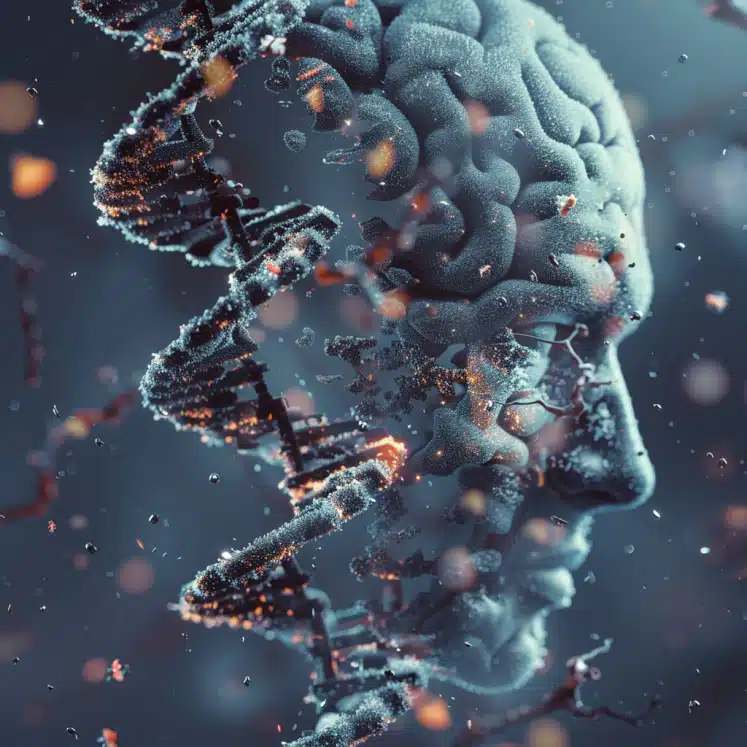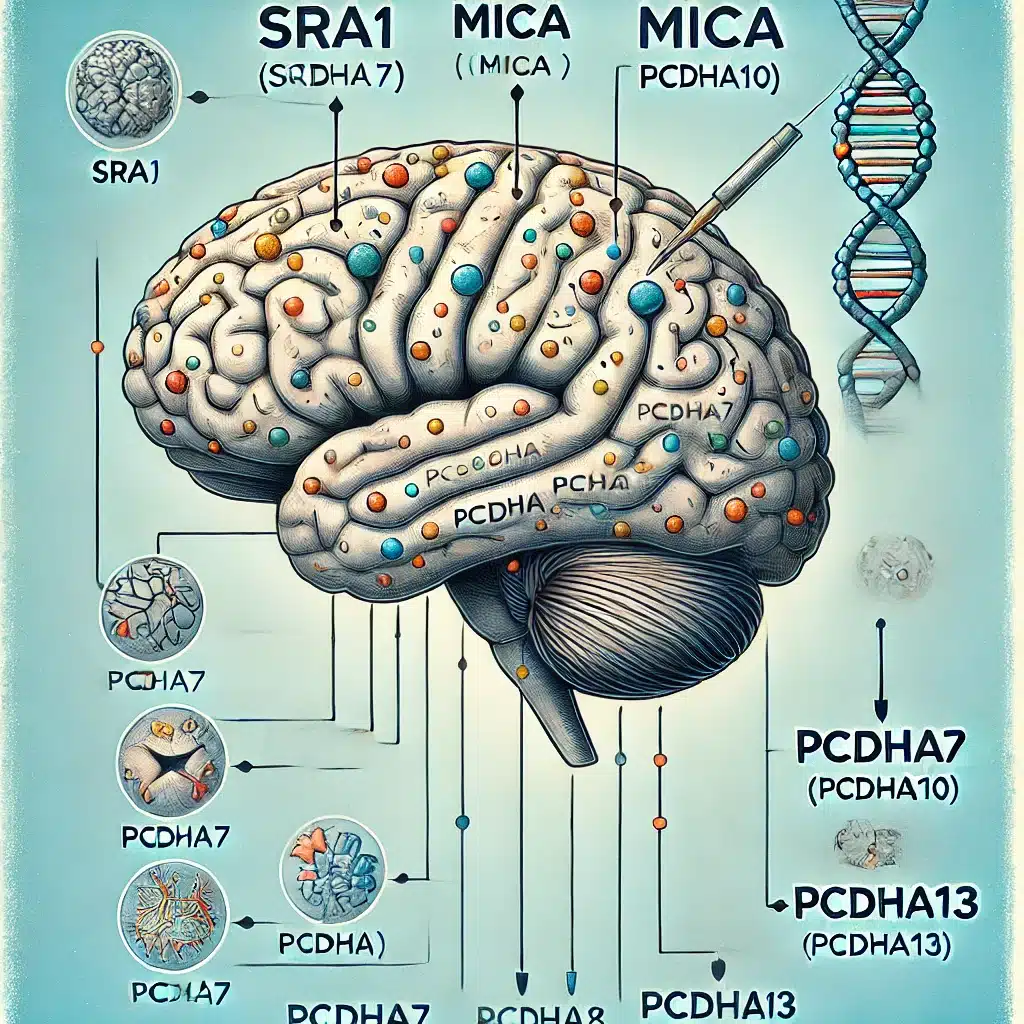A study found shared brain-specific mechanisms between Alzheimer’s disease (AD) and depression, particularly involving synaptic signaling and immune system pathways in the hippocampus, but no direct genetic overlap.
Highlights:
- Six brain-specific eQTL genes (SRA1, MICA, PCDHA7, PCDHA8, PCDHA10, PCDHA13) are shared between AD and depression.
- Pathway analysis identified shared biological pathways, including synaptic signaling, myelination, development, and immune system regulation.
- The study highlights trans-synaptic signaling and synaptoimmunology in the hippocampus as central shared pathomechanisms.
- Despite shared mechanisms, no direct genetic overlap between AD and depression was observed in the dataset.
- The findings suggest potential targets for therapeutic development, emphasizing the role of hippocampal plasticity.
Source: Translational Psychiatry (2024)
Key Findings: Shared Mechanisms in Alzheimer’s Disease & Depression (2024)
Recent research has uncovered several important findings that shed light on the shared biological mechanisms between Alzheimer’s disease (AD) and depression.
1. Shared Brain-Specific Genes
The study identified six brain-specific eQTL (expression Quantitative Trait Loci) genes that are common between Alzheimer’s disease and depression. These genes are SRA1, MICA, PCDHA7, PCDHA8, PCDHA10, and PCDHA13.
SRA1: This gene is involved in regulating gene expression through interactions with steroid receptors, suggesting that hormonal imbalances might play a role in both diseases.
MICA: This gene, which is involved in immune responses and cell stress, hints at the importance of immune system regulation and stress responses in the shared pathology of AD and depression.
PCDHA Genes: These genes (PCDHA7, PCDHA8, PCDHA10, and PCDHA13) belong to a family involved in neuronal development and synaptic signaling, indicating that disruptions in these processes could be critical in both conditions.
2. Shared Biological Pathways
Using pathway analysis, the study found several biological pathways that are common to both AD and depression.
Synaptic Signaling & Organization: Synaptic signaling involves the transmission of signals between neurons, which is crucial for brain function. Disruptions in this process can lead to the cognitive impairments seen in AD and the mood disorders observed in depression.
Myelination: Myelination, the process of forming the protective sheath around nerve fibers, is essential for efficient signal transmission in the brain. Both diseases show abnormalities in myelination, which may contribute to their symptoms.
Developmental Processes: The study highlighted the role of brain development and cellular morphogenesis (the formation and development of cells). Abnormalities in these processes can affect brain structure and function, leading to disease.
Immune System Regulation: The immune system’s role in the brain, particularly in regulating synaptic function and responding to stress, appears to be a significant factor in both AD and depression.
3. Trans-Synaptic Signaling & Synaptoimmunology
The research emphasizes the importance of trans-synaptic signaling and synaptoimmunology in the hippocampus, a brain region critical for memory and emotional regulation.
Trans-Synaptic Signaling: This involves communication between neurons across synapses (the gaps between nerve cells). Effective synaptic signaling is essential for memory formation and mood regulation, and its disruption is a common feature in both AD and depression.
Synaptoimmunology: This emerging field studies how the immune system interacts with synapses. The study suggests that immune responses in the brain, particularly involving proteins like MICA, play a role in modulating synaptic function and might contribute to the shared pathology of AD and depression.
4. Lack of Direct Genetic Overlap
Despite the shared eQTL genes and biological pathways, the study did not find direct genetic overlap (i.e., shared genetic variants) between Alzheimer’s disease and depression.
This indicates that while the two diseases share some common mechanisms at the gene expression and pathway levels, they do not necessarily share the same genetic variants, suggesting complex and distinct genetic underpinnings.
5. Therapeutic Implications
The findings point to potential therapeutic targets for both Alzheimer’s disease and depression.
For instance, targeting synaptic signaling pathways and immune system interactions in the brain could provide new avenues for treatment.
Enhancing neurogenesis (the growth of new neurons) in the hippocampus may also be a promising strategy, given its role in coping with stress and maintaining cognitive and emotional health.
References
- Study: Comprehensive analysis of genetic risk loci uncovers novel candidate genes and pathways in the comorbidity between depression and Alzheimer’s disease (2024)
- Authors: Bente M Hofstra et al.









